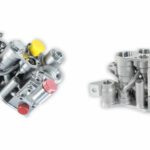One of the interesting applications of the precision provided by 3D printing is that it allows scientists to take inspiration from nature. The art of making bio-inspired technology has evolved into the science of biomimicry. From underwater breathing apparatuses to honey comb structures, it provides all sorts of efficient structural arrangements. In exploring these bio-inspired designs, Arizona State University has partnered with PADT for a new program for accelerating biomimicry.
The university is in good strides considering both they and their partner have earned quite some acclaim already. NASA awarded a grant to ASU and Phoenix Analysis and Design Technologies (PADT) to kick off their research. The $127,000 NASA Small Business Technology Transfer Phase I Grant will go a long way in securing their new 3D printing technologies and setting up their state-of-the-art Additive Manufacturing Center.
Biomimicry presents a lot of applications for the future so it’s not surprising that ASU wants to explore this avenue. There are already functional devices and art works that employ 3D printed biomimics and show off their functions. Aside from building machines, the field also provides great insights into existing creatures by replicating their functions.
ASU’s Partnership With PADT
“PADT has been an excellent partner to ASU and its students as we explore the innovative nature of 3D printing,” said Ann McKenna, school director and professor at The Polytechnic School — one of the six schools in the Ira A. Fulton Schools of Engineering.
A partnership with PADT provides a great deal of expertise in ASU’s corner. Aside from ASU, the company also has partnerships with Lockheed Martin and Stratasys as part of a program that printed 100 functional parts for a space flight to Mars. NASA is also involved in this new partnership with ASU, having provided the grant. They hope that the biomimicry research helps create applications in heat exchanges, lightweight structures and space debris resistant skins.
Dhruv Bhate, associate professor at The Polytechnic School, will be a major figure in the research. He has previously worked with PADT on another project, so he’s well acquainted with their capabilities. “Our ability to build resilient structures while significantly reducing the weight will benefit product designers and manufacturers who leverage the technology.” he states.
Featured image courtesy of Arizona State University (Photo by Nick Narducci), retrieved via their website.


